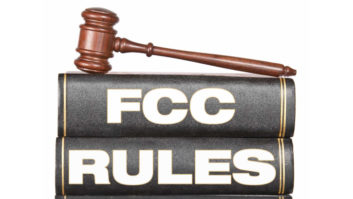
Photo : KXSU Seattle University
The FCC in April modified the technical rules covering low-power FM stations. It expanded the permissible use of directional antennas; permitted waivers of protections of television Channel 6 by a specific group of reserved channel stations; expanded the definition of minor change applications for LPFM stations; and allowed LPFM stations to own boosters. Read more about the changes here.
Michelle Bradley, founder of REC Networks, is an engineer and longtime LPFM advocate.
Radio World: What’s your overall assessment of the outcome and the scope of its impact in the LPFM community?
Michelle Bradley: While the FCC did not address three major issues that are impacting LPFM stations right now — the ability to address building penetration issues, the ability to reach “local” listeners in rural areas and the disparity in how LPFM stations protect FM translators vs. how translators protect LPFMs — the changes will benefit current LPFM stations by giving them more flexibility in moving locations, reduce the need for waivers and improve LPFM service in the southern border region. It will also open some additional opportunities for new LPFM stations in the next filing window.
RW: A concern was raised during the process that LPFMs might be required to conduct a proof of performance in order to use directional antennas, which would would be too costly for most of these stations. What was the outcome?
Bradley: The proof of performance issues came up as a result of concerns that LPFM stations would not properly install directional antennas correctly. The need for this language was a carryover from our proposals that involved the use of contour protection to protect other stations (which in most cases were rejected in the commission’s decisions to not allow for 250 watt LPFM stations or the use of contours to protect translators).

As we were getting very close to the adoption of the Report and Order, I did work very closely with the commission to address the issue of the proofs and verification, especially since the commission had previously allowed directional antennas for state highway public safety departments (there are currently no stations using directional antennas) and second-adjacent-channel waivers.
In those specific cases, staff stated that because the public safety stations still had to meet minimum distance separations and second-adjacent channel short-spacings had a remediation policy, those concerns were already addressed, such as the rule language around second adjacent channel interference remediation.
I had stated that in the case of stations near Mexico, recourse was already available through international notification process and that directional antennas installed for that purpose were not to protect specific stations. The FCC staff agreed. This is what resulted in the three exceptions to the proof rule for public safety, second adjacent and international agreement.
I do note though that for the previous concepts of LP-250 and proposed rules to allow LPFMs to use contours towards translators, I asked for a similar remediation rule to the one that FM translators use right now for LPFMs that decide to use contours. That was never addressed in the Report and Order.
RW: How many LPFMs do you think are likely to take advantage of the directional antenna option?
Bradley: Very few LPFM stations would benefit from directional antennas. This includes a subset of LPFM stations near the Mexican border and those where the directional characteristic of the antenna would benefit in a second adjacent waiver. New or modified LPFM stations proposing operation in the “reserved band” (88.1–91.9 MHz) could use a directional antenna to protect a full-service or low-power TV station on Channel 6. Despite that, the FCC is now allowing LPFM stations to obtain consent from the affected Channel 6 TV station, consistent with the current rules for FM translators.
Directional antennas could also be engaged in very rare cases of mutual interference between two properly spaced stations and could serve as a method for LPFM stations planning to use solar in order to reduce their transmitter power output (power consumption).
The use of directional antennas overall should be few and far between.
RW: What is the benefit of permitting waivers of protections for Channel 6?
Bradley: The waiver for Channel 6 puts LPFM on a more level playing field with FM translators. I originally proposed that LPFMs use the translator rules for Channel 6. The FCC’s original proposal to eliminate all Channel 6 protections was a complete surprise. The rejection of the total elimination of Channel 6 protection was spearheaded by ABC (WPVI) in ex parte after the comment period closed. I also note that the issues of FM to Channel 6 protections (and vice versa) are also being discussed in a separate proceeding for “Franken FM” stations. The waiver process is consistent with what I originally asked for. ABC also asked that any LPFM station seeking a waiver send a notification letter to the affected Channel 6 station. This was supported by NAB. After consideration of the issue and the number of potential waiver requests, I agreed it was a reasonable request. FM to Channel 6 will likely be revisited at a later date.
RW: The mention of boosters stands out; is that something you see a lot of demand for?
Bradley: Boosters in LPFM only impact an extremely small subset of stations that have large lobes in their protected service contours due to what I call “foothill effect,” but because of terrain are unable to put service into those areas.
Currently, there are only four stations, all in Southern California, that have been authorized boosters, all of which I was involved with. One of those boosters is already on the air.
Boosters are very complex, especially in areas where terrain is not has “hard” as Southern California, where synchronization would need to be used. In addition, most of the country has much smaller service contour lobes and it would be impractical to squeeze a second signal inside the LPFM service contour. My request for codification was to assure the stability of the existing Southern California LPFM boosters and to have a process in place and in those rare cases where a booster would help fill in coverage for a terrain challenged LPFM, the option is available without waiver.
RW: What else should we know?
Bradley: I do remain concerned that the FCC does not want to pull the “training wheels” off of LPFM and let those who with the resources to have access to the more flexible methods allowed to other secondary users of the broadcast spectrum while still remaining in compliance with the statutory requirements of the Local Community Radio Act.
“The LPFM service has evolved and matured, and it is not the same service that former Chairman William Kennard pictured back in 1999 when LPFM was first proposed.” — Michelle Bradley
At one time, getting a contour study done normally involved a high-dollar engineering firm. In this day and age, with the use of various resources including those provided by the FCC, the ability to do contour studies has become more accessible, with less dependence on topo maps, slide rules and five-figure software packages.
While I understand that they want to keep LPFM simple, it’s important to realize that more than half of the LPFM applications filed in the 2013 window were assisted with “hired help.” This tells me that the resources to do contour studies are out there and within reach of LPFM applicants.
The use of consultants and/or engineers became necessary in 2012 when in implementing the Local Community Radio Act, the FCC allowed LPFM stations to use the Living Way method of waiving second adjacent channel protection rules. As I told the commissioners a while back, the LPFM service has evolved and matured, and it is not the same service that former Chairman William Kennard pictured back in 1999 when LPFM was first proposed. Yet, for some reason, the current FCC seems to want to hold it back.






